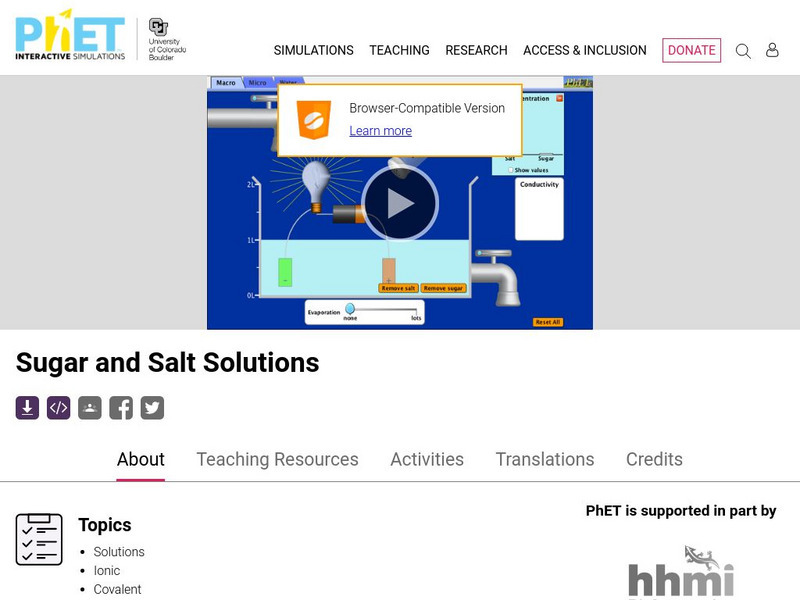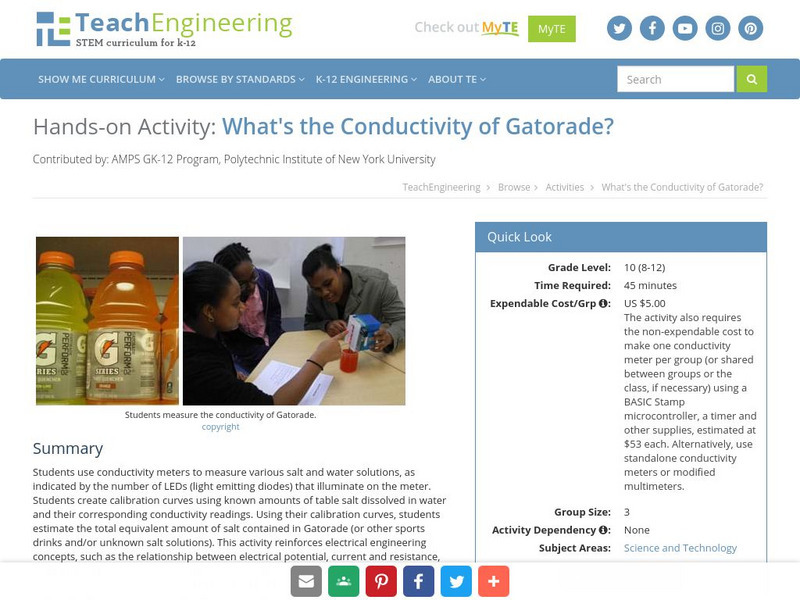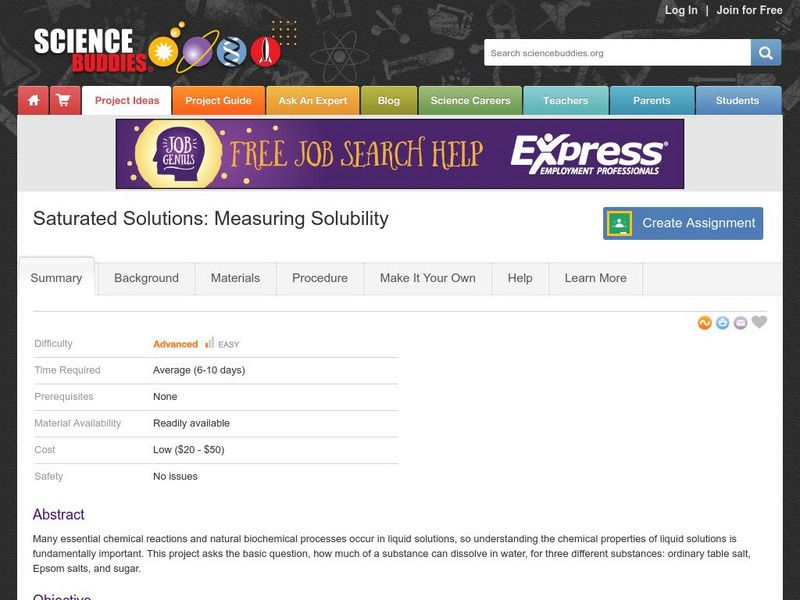Curated OER
Kitchen Electrophoresis
Students investigate and explain the differences active transport versus passive transport. This instructional activity includes an individual and group activity. The basic steps of electrophores is the focus of inquiry. Identification...
Curated OER
Yellow Pod
Students use appropriate skills to design and conduct scientific investigation. They sort and classify various ingredients and analyze their investigation. Finally, students describe the observable states of matter, bot solids and liquids.
Curated OER
ISOLATION OF DNA FROM ONION
Students perform a laboratory exercise designed to show how DNA can easily be extracted from onion cells. They conduct an optional test for the presence of DNA using standard lab equipment.
Curated OER
DNA: What Does It Mean?
Tenth graders explore DNA using online tutorial. They perform their own DNA extraction from a clove of garlic and identify the key components of DNA.
Curated OER
DNA Isolation
Young scholars use scientific methods to investigate the concept of DNA. They observe the DNA of human cheek cells. This is done with the use of a lab experience. Students record their observations and reflect upon on how each organism...
Curated OER
Rusting: A Form of Oxidation
High schoolers observe and record the corrosive nature of oxidation-reduction reactions, and determine the electro-chemical series of selected metals.
Curated OER
Enzymatic Reaction
Students explore the effect enzymes have on reactions. They demonstrate the process of enzymatic reaction by making cheese. after experimentation, they answer a series of questions.
Curated OER
Milk and Dairy Test
Students explore how to select and prepare milk and milk products, identify standard serving size for milk and milk products, review terms associated with milk and milk products, and demonstrate knowledge of how to use and care for these...
Utah STEM Foundation
Utah Stem Action Center: Salt Dissolved in Great Salt Lake
In this lesson, students will compare water from a fresh lake to water from the Great Salt Lake to begin to build a conceptual model for how salt dissolves in water. The lesson focuses on students using and developing models of molecules...
Concord Consortium
Concord Consortium: Molecular Workbench: Dissolving Salt in Water
View this simulation to see salt dissolve in water at the molecular level.
American Chemical Society
Middle School Chemistry: Lesson Plans: Why Does Water Dissolve Salt?
Young scholars use their own model of a salt crystal and water molecule to show how water dissolves salt. Then, they relate their observations to the structure of salt, water, and alcohol on the molecular level.
University of Colorado
University of Colorado: Ph Et Interactive Simulations: Sugar and Salt Solutions
What happens when sugar and salt are added to water? Pour in sugar, shake in salt, and evaporate water to see the effects on concentration and conductivity. Zoom in to see how different sugar and salt compounds dissolve. Zoom in again to...
Science Education Resource Center at Carleton College
Serc: Making Bath Salts for Mother's Day, a Primary Chemistry Lesson
What do you know about salt? In this chemistry lesson, learners will learn different things about salt: the chemical name, it's periodic table number, it's shape under the microscope, how it dissolves in water, and how to make a mixture...
TeachEngineering
Teach Engineering: What's the Conductivity of Gatorade?
Students use conductivity meters to measure various salt and water solutions, as indicated by the number of LEDs (light emitting diodes) that illuminate on the meter. Students create calibration curves using known amounts of table salt...
ClassFlow
Class Flow: Dissolving and Evaporation
[Free Registration/Login Required] Ever wondered what happens at the molecular/ionic level when salt is dissolved in water or salt-water is evaporated by heating/boiling? Peek into the molecular world with this flipchart to view these...
University of Colorado
University of Colorado: Ph Et Interactive Simulations: Salts and Solubility
Add different salts to water, then watch them dissolve and achieve a dynamic equilibrium with solid precipitate. Compare the number of ions in solution for highly soluble NaCl to other slightly soluble salts. Relate the charges on ions...
US Geological Survey
U.s. Geological Survey: Saline Water
Information about saline water use in the United States.
American Chemical Society
Middle School Chemistry: Does Temperature Affect Dissolving?
Investigate the difference between the solubility of salt and sugar in hot and cold water.
TOPS Learning Systems
Tops Learning Systems: Top Science: In Between [Pdf]
Investigate why mixing salt with rice, or salt with water, causes the overall volume to decrease.
Texas Instruments
Texas Instruments: Designing Hot and Cold Packs
in this activity, students calculate the molar enthalpy of dissolving for three ionic solids, and use this information to design a cold pack. In this experiment they measure the heat changes which occur from various salts dissolving in...
Science Buddies
Science Buddies: Saturated Solutions: Measuring Solubility
Many essential chemical reactions and natural biochemical processes occur in liquid solutions, so understanding the chemical properties of liquid solutions is fundamentally important. This project will challenge you to discover how much...
Science Buddies
Science Buddies: What's the Point of Boiling?
You know that water can exist in three separate phases: solid (ice), liquid (water), and vapor (steam). To change from one phase to another, you simply add (or remove) heat. When water boils, what happens to molecules (for example sugar...
CK-12 Foundation
Ck 12: Plix: Solute and Solvent
[Free Registration/Login Required] While paying attention to the charges, move the salt ions and water molecules around to simulate how salt ions are dissolved in water.
PBS
Pbs Teachers: Rising Ice Experiment
Observe how ice and salt crystals interact by using salt to help adhere a string to the top of an ice cube in a glass of water, then lift the cube out of the water.



















